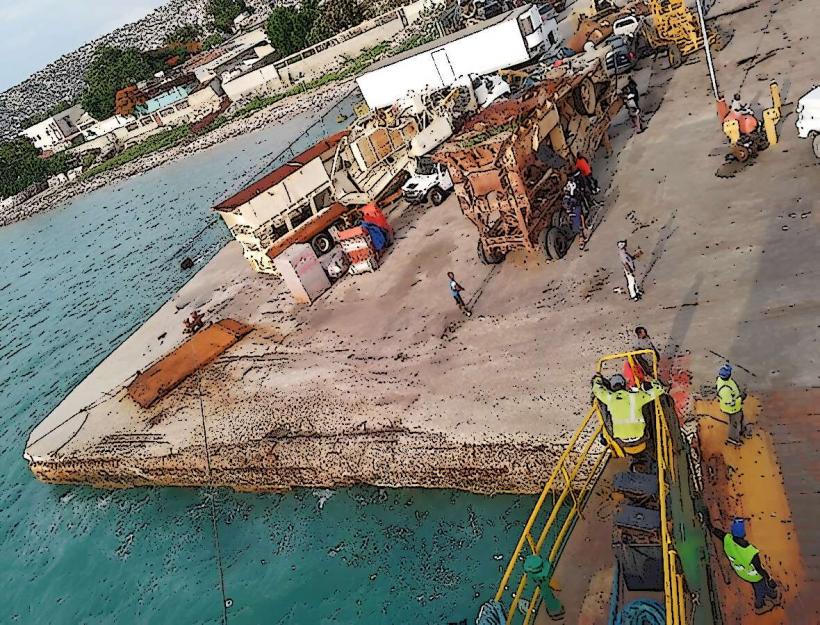Information
Landmark: Saint-Marc CathedralCity: Saint Marc
Country: Haiti
Continent: North America
The Saint-Marc Cathedral (Cathédrale de Saint-Marc) is one of the significant landmarks in Saint-Marc, a city located in the Artibonite department of Haiti. The cathedral is a place of religious and cultural importance, both as a center of worship and as a symbol of the local community’s heritage.
Here are some detailed aspects of the Saint-Marc Cathedral:
1. Historical Background:
- The Saint-Marc Cathedral is a Roman Catholic cathedral that serves as the seat of the Diocese of Saint-Marc, which was established in 1861.
- The city of Saint-Marc itself has a rich history, being one of the larger cities in Haiti, and the cathedral has stood as a significant religious and cultural center for the local population for many decades.
- The cathedral was originally constructed in the 19th century, though it has undergone renovations and reconstructions over the years. Like many other historical buildings in Haiti, it has faced challenges such as earthquakes and other natural disasters, which have necessitated rebuilding efforts.
2. Architectural Features:
- The architecture of the Saint-Marc Cathedral is influenced by both European and Caribbean styles, which is common in many of Haiti's colonial-era buildings.
- The building has a traditional layout with a long nave, side aisles, and a high ceiling. The exterior features a simple yet elegant design, with a large entrance and a bell tower that serves as a visual focal point of the cathedral.
- Inside, the cathedral is adorned with religious artwork, including stained glass windows, murals, and statues of saints, reflecting both the Catholic tradition and the local Haitian culture.
3. Role in the Community:
- The Saint-Marc Cathedral plays a central role in the spiritual and social life of the people of Saint-Marc. It hosts regular masses, religious events, and ceremonies, such as weddings, baptisms, and funerals.
- It also serves as a gathering place for the community during major religious celebrations, including Christmas, Easter, and Assumption of Mary. The church is especially significant for the Catholic population in the region, as well as for those who practice Voodoo, due to the intertwined nature of Catholicism and Voodoo in Haiti's cultural practices.
4. Cultural Significance:
- Saint-Marc Cathedral, like many churches in Haiti, has a deep connection to the history of the Haitian people. Catholicism has played an important role in the development of Haiti's national identity, and the cathedral represents a historical continuity of that influence.
- In addition to its religious role, the cathedral is a place of community and local pride. During significant events such as national holidays or visits from prominent figures, the cathedral is often a central gathering place.
5. Natural and Architectural Challenges:
- Like many buildings in Haiti, the Saint-Marc Cathedral has been affected by Haiti’s vulnerability to natural disasters, particularly earthquakes. Earthquakes, hurricanes, and floods have posed challenges to the preservation of such historic structures.
- In 2010, Haiti was struck by a devastating earthquake that affected many buildings across the country, including churches. While Saint-Marc Cathedral sustained some damage, it was largely spared from the worst destruction that hit the capital, Port-au-Prince. Efforts to restore the cathedral to its former state have been ongoing, as with many buildings in the country.
6. Location and Accessibility:
- The cathedral is located in the heart of the city of Saint-Marc, which is situated along the Artibonite River, making it easily accessible to both local residents and visitors to the city.
- The city of Saint-Marc is a major transportation hub, and the cathedral can be reached by public transport, car, or walking from various parts of the city.
7. Tourism and Visitors:
- Saint-Marc, though not as well-known internationally as other parts of Haiti, is rich in history and culture. The cathedral is one of the key landmarks in the city and serves as an attractive destination for those interested in Haiti’s religious and architectural heritage.
- Visitors to the cathedral can learn about the cultural and religious practices of the local population, and they may also have the opportunity to participate in religious services or observe local traditions.
Conclusion:
The Saint-Marc Cathedral is an important religious and cultural landmark in Haiti. It is a symbol of both the Catholic faith and the unique blend of African and European influences in Haitian culture. The cathedral stands as a testimony to Haiti's resilience, preserving its history and traditions through centuries of change. Whether as a center of worship, a site for cultural reflection, or a place of community gathering, the Saint-Marc Cathedral remains a cherished part of Haiti's spiritual and historical heritage.



